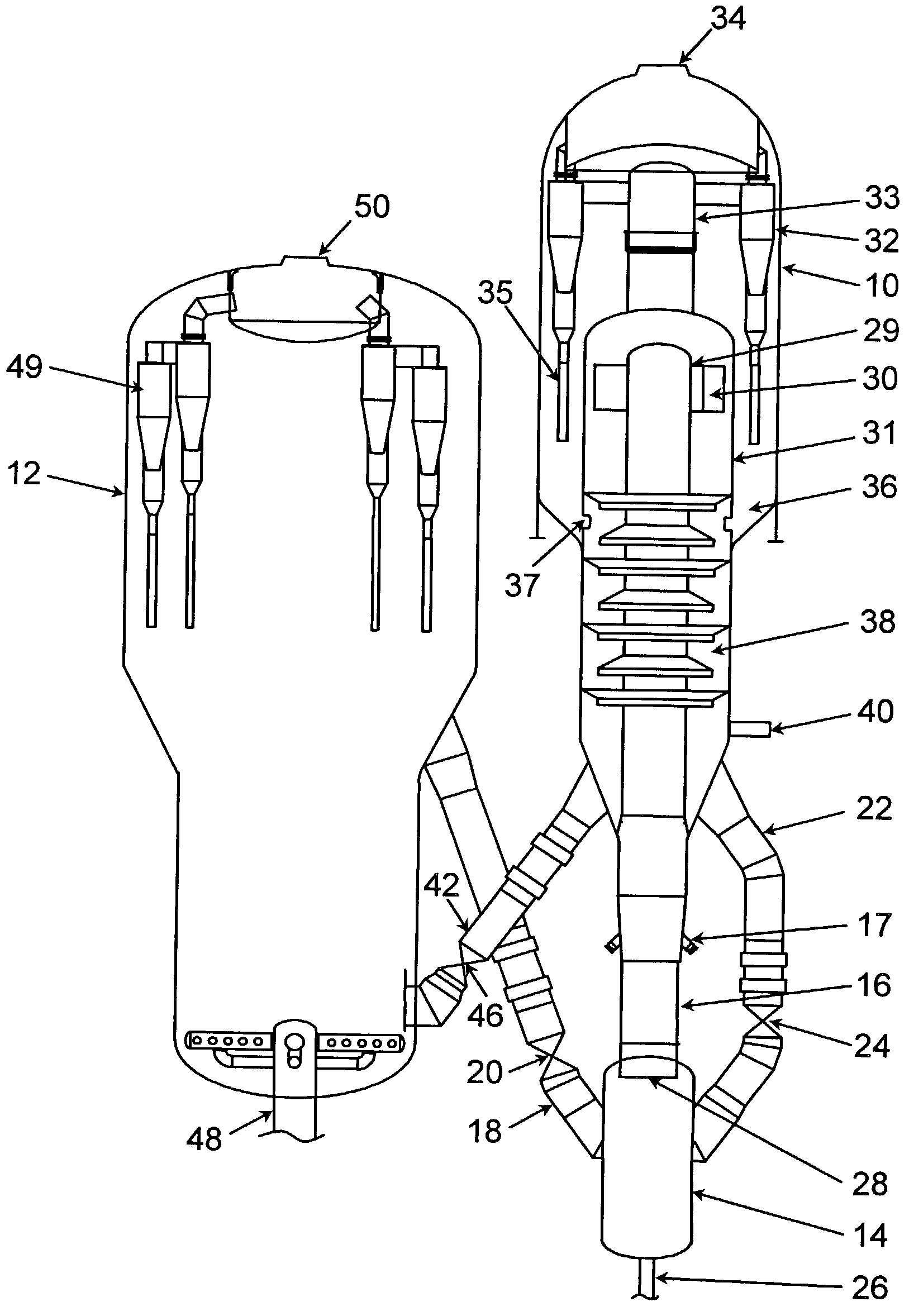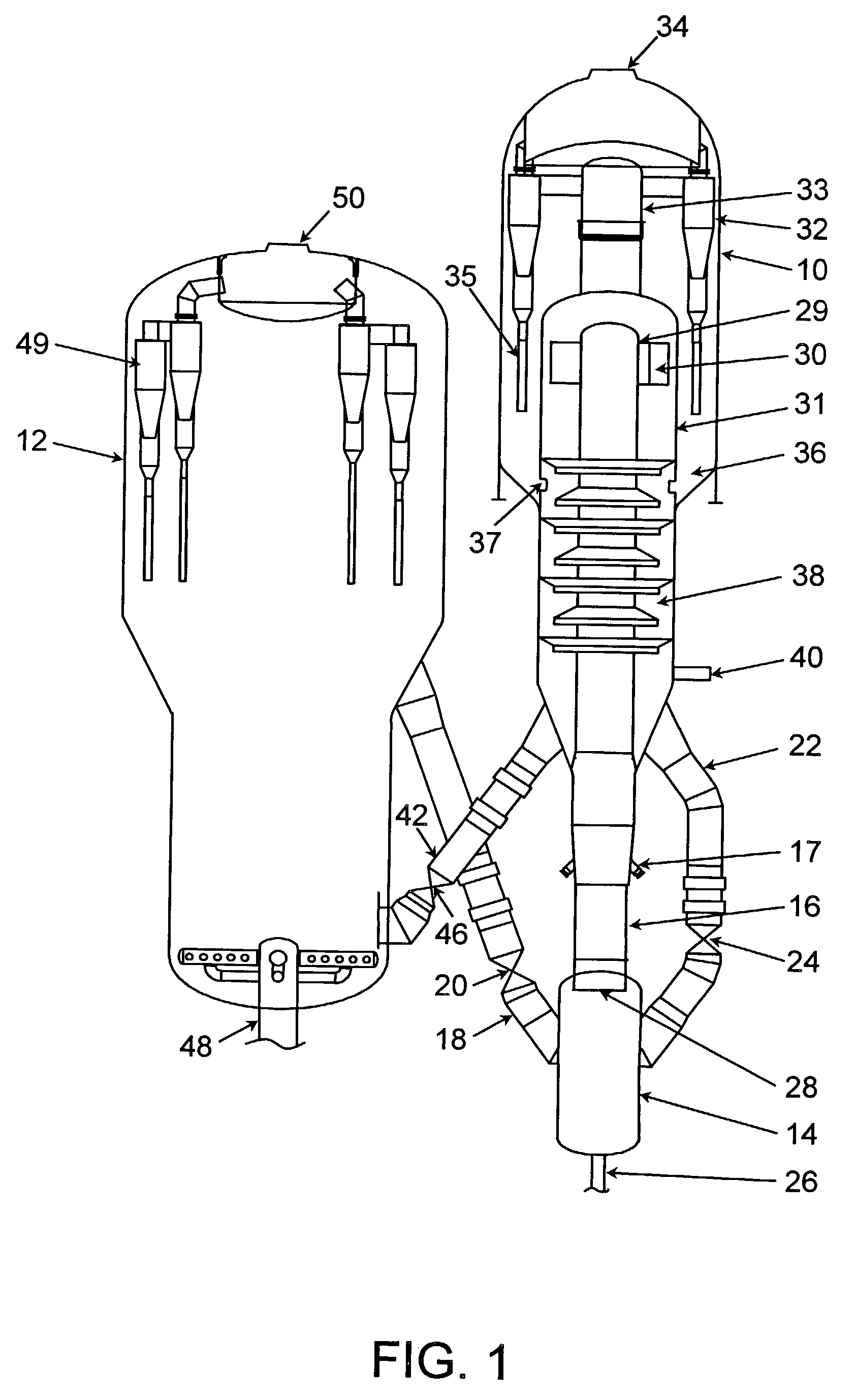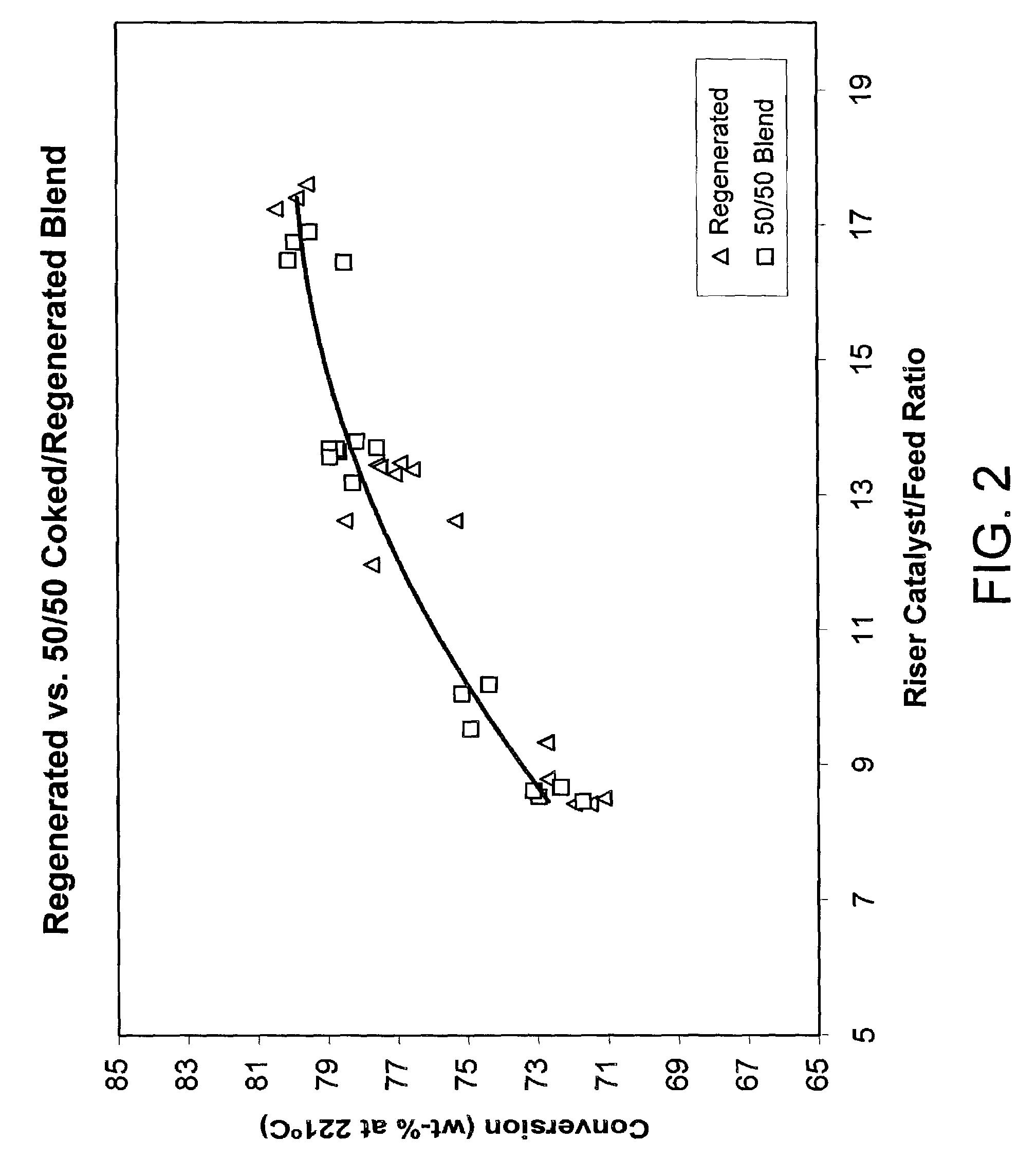FCC process with improved yield of light olefins
a light olefin and process technology, applied in the direction of hydrocarbon by hydrocarbon cracking, chemical apparatus and processes, organic chemistry, etc., can solve the problems of patents that do not target significant production of light olefins, fcc units producing only around 5 wt-% of propylene, and relatively substantial quantity of undesirable dry gas, etc., to achieve the effect of improving the yield of light olefins and improving the selectivity of o
- Summary
- Abstract
- Description
- Claims
- Application Information
AI Technical Summary
Benefits of technology
Problems solved by technology
Method used
Image
Examples
example 1
[0045]We conducted a study to determine the benefits of reducing riser contact time effects in the presence of a catalyst composition containing a large quantity of a small to medium pore zeolite component, and in a process system where the temperature of the catalyst contacting the feed is representative of a recycled catalyst system. The study was conducted in a FCC riser operating under conditions favorable to obtain greater yields of light olefins. Tests were performed using three riser residence times: 2.5 seconds, 1.5 seconds, and 0.7 seconds. A riser in the FCC process was run at 141 kPa (20.5 psia), a regenerator temperature of around 654° C. (1210° F.), an outlet temperature of 566° C. (1050° F.), a feed temperature of about 121° C. (250° F.), a riser hydrocarbon partial pressure of about 76 kPa (11 psia), and a catalyst-to-feed ratio of about 28. The feed was High Sulfur Diesel and the catalyst composition was a mixture of 80 wt-% Octacat™, a Y-type zeolite catalyst compon...
example 2
[0048]One of the benefits of the present invention is that recycling of coked catalyst and mixing it with regenerated catalyst can reduce the catalyst temperature entering the riser by 28° to 83° C. (50° to 150° F.), depending on the regenerator temperature and the coked catalyst recycle rate. A study was conducted to demonstrate the effect of lower catalyst temperature contacting the feed in a short riser residence time system where the catalyst contained a high concentration of a medium pore zeolite. The effect of catalyst temperature contacting the feed was observed at 649° C. (1200° F.) and 732° C. (1350° F.) with catalyst composition containing 20 wt-% of an additive containing about 25 wt-% ST-5 medium pore zeolite and 80 wt-% of Octacat™, a catalyst containing Y-type zeolite. Tests were performed at 141 kPa (20.5 psia) with a hydrocarbon partial pressure of 76 kPa (11 psia), 566° C. (1050° F.) riser outlet temperature, 149° C. (300° F.) feed temperature, and a riser contact t...
example 3
[0051]We compared the performance of a fully regenerated catalyst and a blend containing 50 wt-% coked catalyst and 50 wt-% regenerated catalyst. The tests were performed in a circulating riser pilot plant, which has the capability of recycling coked catalyst and regenerated catalyst to the riser. The amount of coke on the regenerated catalyst was about 0.01 wt-%, whereas, the amount of coke on the 50 / 50 coked / regenerated blend was between 0.27 and 0.35 wt-%. The feed used in the study was a West Texas Intermediate Vacuum Gas Oil with a boiling point range of 274° to 573° C. (526° to 1063° F.). The catalyst used was a typical Y-type zeolite containing FCC catalyst called Orion™ produced by W.R. Grace & Co., which was previously used in a commercial FCC unit to insure that equilibrium activity was reached. The key riser pilot plant tests were all performed with a riser outlet temperature of 515° C. (960° F.) and a riser pressure of 241.3 kPa (35 psia).
[0052]Surprisingly, the results ...
PUM
| Property | Measurement | Unit |
|---|---|---|
| partial pressure | aaaaa | aaaaa |
| temperature | aaaaa | aaaaa |
| contact time | aaaaa | aaaaa |
Abstract
Description
Claims
Application Information
 Login to View More
Login to View More - R&D
- Intellectual Property
- Life Sciences
- Materials
- Tech Scout
- Unparalleled Data Quality
- Higher Quality Content
- 60% Fewer Hallucinations
Browse by: Latest US Patents, China's latest patents, Technical Efficacy Thesaurus, Application Domain, Technology Topic, Popular Technical Reports.
© 2025 PatSnap. All rights reserved.Legal|Privacy policy|Modern Slavery Act Transparency Statement|Sitemap|About US| Contact US: help@patsnap.com



